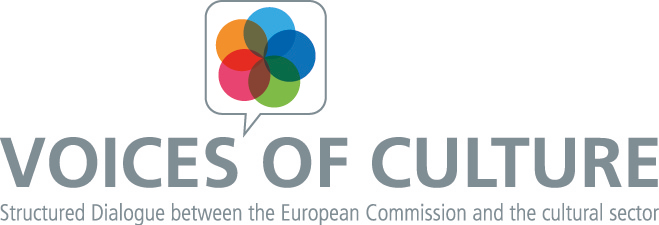[fusion_builder_container hundred_percent=”yes” equal_height_columns=”yes” hide_on_mobile=”small-visibility,medium-visibility,large-visibility” id=”Theme-container” background_position=”center center” background_repeat=”no-repeat” fade=”no” background_parallax=”none” enable_mobile=”no” parallax_speed=”0.3″ video_aspect_ratio=”16:9″ video_loop=”yes” video_mute=”yes” border_style=”solid” padding_right=”0px” padding_left=”0px”][fusion_builder_row][fusion_builder_column type=”1_4″ layout=”1_4″ spacing=”” center_content=”no” hover_type=”none” link=”” min_height=”” hide_on_mobile=”small-visibility,medium-visibility,large-visibility” class=”Color-column-7″ id=”Color-column” background_color=”” background_image=”” background_position=”left top” undefined=”” background_repeat=”no-repeat” border_size=”0″ border_color=”” border_style=”solid” border_position=”all” padding_top=”0px” padding_right=”30px” padding_bottom=”0px” padding_left=”30px” margin_top=”” margin_bottom=”0px” animation_type=”” animation_direction=”left” animation_speed=”0.3″ animation_offset=”” last=”no”][fusion_imageframe image_id=”559″ style_type=”none” hover_type=”none” align=”none” lightbox=”no” linktarget=”_self” hide_on_mobile=”small-visibility,medium-visibility,large-visibility” animation_direction=”left” animation_speed=”0.3″]https://www.voicesofculture.eu/wp-content/uploads/2017/02/digital-white.png[/fusion_imageframe][fusion_title hide_on_mobile=”small-visibility,medium-visibility,large-visibility” size=”3″ content_align=”left” style_type=”none”]
Audience Development via Digital Means
[/fusion_title][fusion_button link=”https://www.voicesofculture.eu/wp-content/uploads/2018/07/1.Brainstorming_report_Audience_Development.pdf” title=”” target=”_blank” link_attributes=”” alignment=”” modal=”” hide_on_mobile=”small-visibility,medium-visibility,large-visibility” class=”” id=”” color=”default” button_gradient_top_color=”” button_gradient_bottom_color=”” button_gradient_top_color_hover=”” button_gradient_bottom_color_hover=”” accent_color=”” accent_hover_color=”” type=”flat” bevel_color=”” border_width=”” size=”large” stretch=”default” shape=”round” icon=”fa-download” icon_position=”left” icon_divider=”no” animation_type=”” animation_direction=”left” animation_speed=”0.3″ animation_offset=””]BRAINSTORMING REPORT[/fusion_button][/fusion_builder_column][fusion_builder_column type=”3_4″ layout=”3_4″ spacing=”” center_content=”no” hover_type=”none” link=”” min_height=”” hide_on_mobile=”small-visibility,medium-visibility,large-visibility” class=”” id=”Color-text-7″ background_color=”” background_image=”” background_position=”left top” undefined=”” background_repeat=”no-repeat” border_size=”0″ border_color=”” border_style=”solid” border_position=”all” padding_top=”0px” padding_right=”10%” padding_bottom=”50px” padding_left=”10%” margin_top=”” margin_bottom=”0px” animation_type=”” animation_direction=”left” animation_speed=”0.3″ animation_offset=”” last=”no”][fusion_title hide_on_mobile=”small-visibility,medium-visibility,large-visibility” size=”1″ content_align=”left” style_type=”none”]
About the Theme
[/fusion_title][fusion_text]
Accessible and Inclusive Culture – Promoting access to culture via digital means:
policies and strategies for audience development
In its Work Plan for Culture (2015-2018)(1), the Council of the EU proposes a key issue to be discussed by Member States during the coming months: ‘What is the impact of the digital shift on audience development policies and the practices of cultural institutions?’
Possible answers depend, first of all, on definitions or priorities set by audience development (AD) strategies:
- Informing and attracting audiences is a goal common to almost all types of cultural organisations or content providers, regardless of their size, status (public, not-for-profit, commercial) and programmes;
- Enlarging audiences is particularly important for newcomers and small organisations, as well as for programmes and institutions that have limited public appeal, are in need of more revenue or have an ageing audience (i.e. less so in cases where institutions already operate at full capacity);
- Diversifying or ‘democratising’ audiences of cultural organisations is a frequent political goal either at the level of cultural institutions or that of policy makers/funders;
- Developing a meaningful and more interactive relationship with (diverse) audiences could be understood as ‘audience engagement’, taking place in real or virtual ‘shared spaces’(2) and respecting both the diversity of cultural expressions and artistic freedom;
- Audience development through co-creation with the audience.
For these and other AD strategies, digital tools and online platforms provide many new opportunities, ranging from more up-to-date information, to improved usability of, or distant access to, cultural services; better opportunities for interactive communication through blogs, social networks, etc.; discovery and learning about the arts, heritage and socio-culture; or community building, advocacy and the mobilisation of voluntary work.
Clearly, not all of the new instruments have already been fully explored or are actively being used by arts and heritage institutions throughout Europe. For some of them, digital tools may still be unfamiliar; others struggle with financial and rights issues or see AD marketing strategies based on audience demands(3) and online ‘edutainment’ as a danger to the artistic quality of their programmes, while others sometimes fail to detect online and digital tools as opportunities for ‘quality content marketing’. In addition, conditions for cultural policy making, management, research and evaluation in this domain differ in the EU Member States, e.g. with regard to know-how and financial or human resources(4).
A different line of discussion could address the audiences for digitised cultural content and genuine digital works. Supported by European, national, regional and local public funds, digitisation has progressed, particularly in the domain of heritage (e.g. digital libraries, museum collections, restoration of films). In the arts and literature, the creation, reproduction and distribution of new works by digital means and the re-mastering of older ones has also turned into a reality, although prompted more by private market forces. As pointed out by expert Divina Frau-Meigs (Sorbonne Nouvelle University, France)(5): ‘The online challenge for cultural diversity and pluralism is not only the protection and promotion of legacy arts and broadcast content but also the fostering of user-generated content and comments, which moves the public from consumption to participation’.
This state of affairs could suggest a discussion on the themes of Promoting access to culture via digital means: policies and strategies for audience development, focusing on the following set of questions (list not exhaustive):
- Q1. What are the opportunities to be seized?
- Q2. What are the challenges to be addressed?
- Q3. What are the lessons to be learned from existing practices?
- Q4. Can digital means help cultural institutions reach out to different or less accessible audiences (men/women, young people, seniors, people with disabilities, migrant communities, etc.)?
- Q5. What are the cultural sector’s expectations from public administrations at national, regional and EU levels with regard to cultural audience development via digital means?
- Q6. What local/regional/national best practices could be shared at a European level?
_____________________________________________
(1) 16094/14 adopted on 25 November 2014.
(2) cf. the Report ‘Sharing Diversity’ on www.interculturaldialogue.eu.
(3) cf. Arts Council England: Grants for the arts – audience development and marketing (2011 information sheet).
(4) cf. chapter ‘New technologies and digitalisation in the arts and culture’, www.culturalpolicies.net country profiles.
(5) at the 10th Conference of Ministers responsible for Culture (Council of Europe, Moscow 2013).
[/fusion_text][fusion_title hide_on_mobile=”small-visibility,medium-visibility,large-visibility” size=”1″ content_align=”left” style_type=”none”]
Brainstorming session
18-19 June 2015, Amsterdam/The Netherlands
[/fusion_title][fusion_text]
[/fusion_text][fusion_title hide_on_mobile=”small-visibility,medium-visibility,large-visibility” size=”1″ content_align=”left” style_type=”none”]
Brainstorming Report
[/fusion_title][fusion_text]
The session on “promoting intercultural dialogue and bringing communities together through culture in shared public spaces”, held on 17-18 March 2016 in Barcelona, has provided a space for exchange and discussion between around 35 participants representing the cultural sectors from the EU Member States.
The present report is the result of the discussion presented to the European Commission at a Dialogue Meeting on 29 April 2016 in Brussels.
[/fusion_text][fusion_title hide_on_mobile=”small-visibility,medium-visibility,large-visibility” size=”1″ content_align=”left” style_type=”none”]
Dialogue Meeting
27 October 2015, Brussels/Belgium
[/fusion_title][fusion_text]
The Dialogue Meeting took place on 27 October 2015 in Brussels/Belgium. It was the occasion for the participants to meet the European Commission and discuss the results of the Brainstorming Session.
[/fusion_text][/fusion_builder_column][/fusion_builder_row][/fusion_builder_container]
